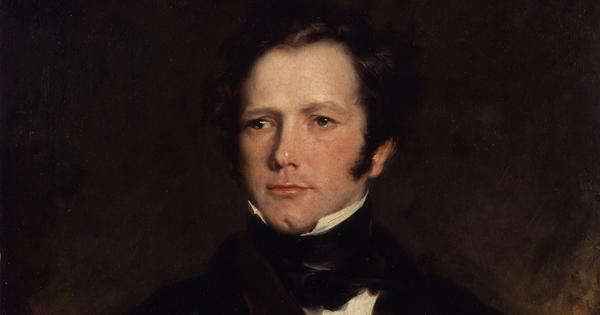
“This is a bad world, and I thank heaven that I have lived in the woods.”
Captain Frederick Marryat (1792-1848) was a man of many talents. He belonged to sea – he loved it as an explorer and deeply understood it as a naval officer. He invented the modern lifeboat and remained in faithful service of the crown till he retired in 1830. He was a royalist unlike any other and staunchly disapproving of the 17th-century English civil war.
Life in the forest
Published in 1847, his final novel, The Children of the New Forest (and the first historical fiction for young readers), recreates the early days of King Charles I’s defeat in the civil war and his exile in the New Forest. The rebels are still out for his blood and the soldiers have been sent to search the forest. Playing truant, they set Arnwood, Colonel Beverley’s house, on fire. The colonel died in action while fighting for the king and his wife, of heartbreak. Their four orphaned children – Edward, Humphrey, Alice and Edith – are thought to have perished in the fire. However, Jacob Armitage, a local verderer, comes to their rescue. The children are told to hide in an isolated cottage and pretend to be Jacob’s grandchildren.
The children are advised to stay put and master the ways of the forest till they come of age. Used to the comforts of the wealthy, the four, at first, dread the years that they’ll have to live in poverty and seclusion. There are lengthy passages about giving up venison for the rustic mutton; in fact, there even comes a time when the children have to make do with goats and chicken. Unable to deny themselves this indulgence for too long, the eldest brother, Edward, takes to hunting deer himself, displaying a natural skill for it.
Marryat sometimes seems to forget that it is a historical novel, written very much with the intent to educate England’s children about their history and the glory of the crown, and ends up treating it as an adventure story. While one sibling hunts deer, the others learn to lasso a cow, milk her, and rear the calf. School is not the top concern in these circumstances – the children must first learn to keep house. The education that accompanies these trying times demands to be more hands-on. Jacob fends off preying soldiers and greedy rebels as he zealously guards the children’s family estate, which they’ll be fortunate enough to win back in time.
A tale of the times
In the meantime, Marryat spends an inordinate amount of time sculpting the boys into men. The girls, unsurprisingly, stay at home and take up matronly duties, even finding opportunities to fall in love and fantasise about future husbands. Their “suitors” are inappropriately older men, which, of course, in the 17th century, was the norm. The children are not entirely alone and unvisited – they take in Pablo, a gypsy, whose portrayal is rather ridiculous. Pablo’s speech is also reminiscent of Africans during America’s chattel slavery era of the 17th and 18th century – and one has to wonder how Marryat’s curious character of Pablo came to be. The pursuit to “civilise” the gypsy boy is also reflective of the crown’s (then nascent) colonial ambitions.
Next, they are visited by Clara, a young girl disguised as a boy, who has befallen a similar fate as them. Clara, too, in her brief appearance, is given a romantic interest, her liberation not so much in returning to a prosperous way of life but in marrying the man with the right title. As a royalist, Marryat reinforces the value of certain family names, calling them “passports” to a respectable life. It would be unfair to hold Marryat to contemporary fiction’s political and ethical standards. These are interesting observations, certainly dated and best not repeated, but still a fascinating window into the early practices of children’s literature. Marryat is commendably stylish in breaking the fourth wall to impart history lessons to his readers – here he disperses information as it is and prevents his personal feelings from interfering in any way.
The adventure bits, which have a lot to do with hunting and skinning animals, may be obsolete for the current generation of young readers but one must acknowledge the eternal appeal of Treasure Island (1883) or Robinson Crusoe (1719), both also far removed in time and ideals. The pull of the forest is almost natal, and in that, Marryat is tremendously successful in portraying the danger-laced, adventure-filled life of four children who are without adult supervision.
But beneath a carefree existence is isolation and an anxiety for the future. Written exactly a century later, with the knowledge of the crown being safe and sound, Marryat too restores the old world order in the children’s lives, with them repossessing the family estate and taking up their aristocratic duties. The Children of the New Forest is sympathetic to the plight of children, often overlooked, in turbulent times and history’s changing tides.
The Children of the New Forest, Frederick Marryat, Wordsworth Editions.
This article first appeared on Scroll.in
📰 Crime Today News is proudly sponsored by DRYFRUIT & CO – A Brand by eFabby Global LLC
Design & Developed by Yes Mom Hosting






